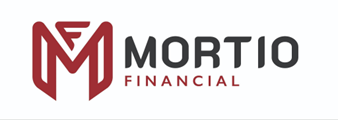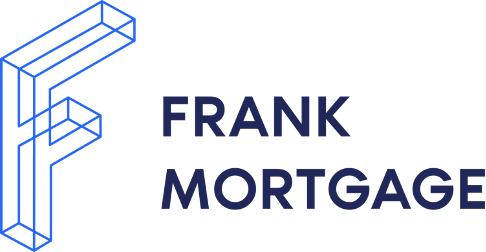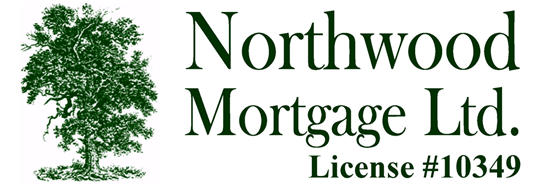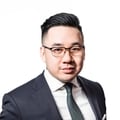The Best Current Mortgage Rates in Ontario
Compare and save up to $11,944* over 5 years.
Today's Best Mortgage Rates in Ontario
Evaluate Ontario’s best mortgage rates in one place. You can compare the most current mortgage rates and monthly payments from 175+ banks and lenders across Ontario.
Rates are based on an average mortgage of $500,000 and subject to change based on filter criteria.
| Lender
|
Insured
|
Insurable
|
Uninsured
|
|---|---|---|---|
|
Mortio Financial Corp
|
3.99%
$2,627.39 / month
|
4.24%
$2,695.56 / month
|
4.14%
$2,668.19 / month
|
|
Frank Mortgage
|
4.09%
$2,654.55 / month
|
4.19%
$2,681.85 / month
|
4.09%
$2,654.55 / month
|
|
Northwood Mortgage Ltd.
|
4.14%
$2,668.19 / month
|
4.24%
$2,695.56 / month
|
4.24%
$2,695.56 / month
|
|
Mortgage Outlet - Russel Inspektor
|
4.29%
$2,709.29 / month
|
4.29%
$2,709.29 / month
|
4.29%
$2,709.29 / month
|
|
Innovation Federal Credit Union
|
4.39%
$2,736.87 / month
|
4.39%
$2,736.87 / month
|
4.39%
$2,736.87 / month
|
|
True North Mortgage
|
2.99%
$2,363.66 / month
|
2.99%
$2,363.66 / month
|
2.99%
$2,363.66 / month
|
|
The Mortgage Advisors
|
3.87%
$2,594.98 / month
|
3.87%
$2,594.98 / month
|
3.87%
$2,594.98 / month
|
|
Nesto
|
3.91%
$2,605.76 / month
|
3.91%
$2,605.76 / month
|
3.91%
$2,605.76 / month
|
|
MortgagestoGo
|
3.94%
$2,613.86 / month
|
3.94%
$2,613.86 / month
|
3.94%
$2,613.86 / month
|
|
Hypotheca
|
3.94%
$2,613.86 / month
|
3.94%
$2,613.86 / month
|
3.94%
$2,613.86 / month
|
|
One Link Mortgage & Financial
|
3.95%
$2,616.57 / month
|
3.95%
$2,616.57 / month
|
3.95%
$2,616.57 / month
|
|
Northern Birch Credit Union
|
3.99%
$2,627.39 / month
|
3.99%
$2,627.39 / month
|
3.99%
$2,627.39 / month
|
|
The Police Credit Union
|
3.99%
$2,627.39 / month
|
3.99%
$2,627.39 / month
|
3.99%
$2,627.39 / month
|
|
Monster Mortgage
|
3.99%
$2,627.39 / month
|
3.99%
$2,627.39 / month
|
3.99%
$2,627.39 / month
|
|
City Wide Financial Corp
|
3.99%
$2,627.39 / month
|
3.99%
$2,627.39 / month
|
3.99%
$2,627.39 / month
|
|
Sudbury Credit Union
|
3.99%
$2,627.39 / month
|
3.99%
$2,627.39 / month
|
3.99%
$2,627.39 / month
|
|
Mainstreet Credit Union
|
3.99%
$2,627.39 / month
|
3.99%
$2,627.39 / month
|
3.99%
$2,627.39 / month
|
|
East Coast Mortgage Brokers
|
4%
$2,630.10 / month
|
4%
$2,630.10 / month
|
4%
$2,630.10 / month
|
|
Prospera Credit Union
|
4.04%
$2,640.95 / month
|
4.04%
$2,640.95 / month
|
4.04%
$2,640.95 / month
|
Today's Best Mortgage Rates in Ontario
Evaluate all of Ontario's best mortgage rates in one place. Rates.cas Rate Matrix lets you compare pricing for all key mortgage types and terms.
Rates are based on an average mortgage of $500,000 and subject to change based on filter criteria.
Updated 05:55 on Jul 26, 2025| Placeholder |
Insured
The rates in this column apply to borrowers who have purchased mortgage default insurance.
This is required when you purchase a home with less than a 20% down payment.
The home must be owner-occupied and the amortization must be 25 years or less.
|
80% LTV
The rates in this column apply to mortgage amounts between 65.01% and 80% of the property value. The home must be owner-occupied and have an amortization of 25 years or less. You must have purchased it for less than $1 million. These rates are not available on refinances. Refinances require "Uninsured" rates.
|
65% LTV
The rates in this column apply to mortgage amounts that are 65% of the property value or less. The home must be owner-occupied and have an amortization of 25 years or less. You must have purchased it for less than $1 million. These rates are not available on refinances. Refinances require "Uninsured" rates.
|
Uninsured
The rates in this column apply to purchases over $1 million, refinances and amortizations over 25 years. More info on the differences between insured and uninsured rates.
|
Bank Rate
Bank Rate is the mortgage interest rate posted by the big banks in Canada.
|
|---|---|---|---|---|---|
| 1-year fixed rate | 4.84% | 4.79% | 4.79% | 5.59% |
5.49%
|
| 2-years fixed rate | 4.04% | 4.34% | 4.34% | 4.39% |
4.79%
|
| 3-years fixed rate | 3.87% | 4.09% | 4.09% | 4.24% |
4.29%
|
| 4-years fixed rate | 4.09% | 4.15% | 4.15% | 4.44% |
4.39%
|
| 5-years fixed rate | 3.91% | 3.89% | 3.89% | 3.91% |
4.09%
|
| 7-years fixed rate | 5.19% | 5.00% | 5.00% | 5.19% |
5.00%
|
| 10-years fixed rate | 5.24% | 5.24% | 5.24% | 5.29% |
6.09%
|
| 3-years variable rate | 4.40% | 4.30% | 4.30% | 4.40% |
6.35%
|
| 5-years variable rate | 4.04% | 4.04% | 4.04% | 4.05% |
4.25%
|
| HELOC rate | N/A | N/A | N/A | N/A |
N/A
|
| Stress Test | 5.25% | 5.25% | 5.25% | 5.25% |
N/A
|
Today's Headline
Ask the Mortgage Expert: Why this could be your window of opportunity into Canadian real estate
Predicting when the absolute bottom will come is like catching a falling knife. But according to mortgage broker and resident expert Steve Garganis, what we have now is a market that is taking a breath, where genuine buyers have a real advantage.
Read moreJul.16.2025
On this page:
- Ontario mortgage rate market 2024 characteristics
- The most popular mortgage terms in Ontario
- Mortgage rate trends in Ontario in 2024
- Average house prices in Ontario
- What affects mortgage rates in Ontario?
- Ontario average new mortgage loan
- Ontario average monthly mortgage payment
- Ontario mortgage performance
- Frequently asked questions about Ontario mortgage rates
Ontario mortgage rate market 2024 characteristics
Ontario is the most populous province in Canada and home to the highest number of lenders in the country. The province is a major immigration hub and Ontarians are grappling with high cost of living since 2021.
It’s no coincidence that Big 5 Canadian banks are headquartered in Toronto, Ontario. So are some of the country’s largest and most competitive credit unions, like Meridian Credit Union, DUCA Financial Services Credit Union, and Alterna Savings and Credit Union. The province has the most bank branches, mortgage brokers and credit unions in the country. And they’re all vying for your mortgage business.
According to the November 2023 Abacus survey data on housing affordability in Ontario, there is rising concern among Ontarians about the cost of living and housing affordability in the province. Ontarians believe buying a home has become more difficult over the past year and it will worsen if left unaddressed.
Among those aspiring to own a home, the wish for ownership is strong with 70% survey respondents who are non-homeowners expressing a desire to own a residential property.
Some of the key factors impacting housing affordability in Ontario are:
- The availability and cost of land for development
- Foreign investors buying residential properties
- Increased immigration to Canada
- Cost of borrowing money for builders
High interest rates are also impacting homeowners with mortgages, prompting them to take steps to reduce their household spending. Although the Bank of Canada’s policy rate is steady at 5%, inflation is showing signs inching down and remains a point of concern for the Bank. The central bank is closely monitoring the downward momentum in core inflation, demand and supply in the economy, wage growth and other factors that would help bring the interest rates down in the future.
Interest rates vary with provinces due to factors such as lack of competition in the mortgage market. The more lenders a market will have, the lower will be the rate available to home buyers. Plus, differences in household income, population, real estate prices and demand, and mortgage amounts also impact the available mortgage rates.
The Big 6 banks in Canada (RBC, TD, Scotiabank, CIBC, BMO, and National Bank) are vying for the home buyers in Ontario and are also the largest lenders in the province. Some other B-lenders and alternative lenders are also vying for a piece of the mortgage pie in Ontario. Credit unions on the other hand have also entered the race with the big banks for mortgage buyers in Ontario.
Ontario also has a higher-than-average ratio of mortgages with 30-year amortizations. This is most likely a result of high property values, which lead borrowers to try and minimize their mortgage payments. The province also has a larger percentage of private mortgages. That’s a direct result of Ontario having more private mortgage lenders than anywhere else in Canada.
The most popular mortgage terms in Ontario
Ontario tends to have the same selection of mortgages as any other province, with a higher concentration of large (a.k.a. “jumbo”) mortgages compared to other provinces. That could be due to Ontario’s higher average incomes.
As is with the rest of the country, Ontario’s mortgage market peaks in the spring, with March, April and May being the busiest months. The best rates are often available during this time when the competition is fiercest.
In Ontario, the 3-year fixed mortgages have been gaining popularity for their predictability and stability. Rates.ca mortgage expert Victor Tran says many homeowners renewing mortgages are taking short-term loans, indicating that they expect rates to fall in the second half of the year 2024. Rates.ca data reflecting consumer intent shows that in March 2024 quotes for 3-year mortgages comprised 46% of the total, up from 27% in December. The percentage of variable-rate quotes fell to 14% from 18% of the total at the end of 2023, down sharply from the peak of 59% in July 2022.
Mortgage rate trends in Ontario (2020-2024)
The Bank of Canada’s ongoing monetary policy tightening to bring down inflation has helped reduce inflationary pressures in the last quarter. Inflation is expected to fall to 2.5% in the second half of 2024 from the earlier 3.9% in 2023 and 8.1% in June 2022. The Bank expects inflation to gradually reach 2% by 2025.
Due to still-high mortgage interest costs, the housing market is witnessing a slowdown in activity in Toronto and the Greater Toronto Area but that’s not the case in markets like Calgary, Alberta, and British Columbia, according to the CREA. The central bank has increased overnight policy interest rate drastically since 2022. Here’s a look back at how the Bank of Canada’s target for the policy interest rate increased in the last two years:
| Date | Target for the overnight rate (%) | Increase |
|---|---|---|
| March 02, 2022 | 0.25 | - |
| March 03, 2022 | 0.50 | +0.25 |
| April 14, 2022 | 1.00 | +0.50 |
| June 02, 2022 | 1.50 | +0.50 |
| July 14, 2022 | 2.50 | +1.00 |
| Sept. 08, 2022 | 3.25 | +0.75 |
| Oct. 27, 2022 | 3.75 | +0.50 |
| Dec. 08, 2022 | 4.25 | +0.50 |
| Jan. 26, 2023 | 4.50 | +0.25 |
| June 08, 2023 | 4.75 | +0.25 |
| July 13, 2023 | 5.00 | +0.25 |
| May 08, 2024 | 5.00 | No change |
| June 05, 2024 | 4.75 | -0.25% |
Source: Bank of Canada
The rise in Bank of Canada’s policy interest rate since March 2022 had a significant impact on mortgage rates, especially variable-rate mortgages. For most of 2021 and into early 2022, variable mortgage rates were substantially lower than fixed mortgage rates. As a result, many borrowers opted for a variable-rate mortgage. These types of mortgages now account for about one-third of total outstanding mortgage debt, up from about 20% at the end of 2019.
With the rapid increase in policy interest rates, variable-rate mortgage borrowers have faced historically large interest rate increases that make reaching their trigger rate a high possibility.
Looking at the difference between fixed-rate mortgage and variable-rate mortgage, borrowers have opted for fixed rate because of less instability and lower rates available. Since 2023, fixed-rate mortgages are also hovering lower than variable-rate mortgages because of bond yields. Financial institutions such as the big banks set their interest rates for each mortgage on the corresponding bond yields, especially the fixed-rate mortgage interest rate which is tied to the bond yield. Read about how bond yields impact fixed-rate mortgages here: Bond yields are going up – but what does that mean for you? (rates.ca)
Source: Bank of Canada
The graph shows the average trend of 5-year fixed rate mortgages and 5-year variable rate mortgages in Canada from 2020-2024. The spike in rates started when Bank of Canada started increasing interest rates in March 2022.
Even as the Bank of Canada began its interest rate hikes, making the lives of variable-rate mortgage holders gradually more difficult, the fixed-rate holder continued paying a lower interest rate. In 2023, bond yields started increasing, and so did the fixed-term mortgage rates. However, fixed-rates still remain lower than variable rate and have been a preferred rate for borrowers in the GTA to avoid instability and interest rate shocks.

Ontarios housing market trend
Living up to its tagline A Place to Grow, Ontario's population is growing too and projected to increase by 43.6% or 6.6 million over the next 24 years. Ontario's population alone is projected to be 21.7 million by July 2046, up from 15.1 million on July 1, 2022.
There are so many incredible aspects to Canadas most populous province, from its natural resources to its growing cities. Hence, it is no surprise that many new immigrants want to live, work and raise a family here.
Based on CREA data, Ontarios housing market saw a modest decline in residential sales activity through the MLS Systems in April 2024 vs. April 2023.
The average price of resale residential homes sold across Ontario in April 2024 was $900,161, down 0.9% from April last year.
In terms of new listings on MLS Systems, Ontario saw an increase of 41.8% from April 2023 with 38,445 new residential listings in April 2024. This trend could be credited to the stability in interest rates and BOC policy interest rate since July 2023 despite rates being high.
Active residential listings were at 48,858 units on the market at the end of April 2024, up by 56.8% from the end of April 2023.
Average house prices in Ontario
The average house prices in different regions of Ontario as of April 2024 compared to April 2023 are below:
| City | April 2024 | April 2023 | Year Over Year Changes |
|---|---|---|---|
| Ontario provincial average | 900161 | 908149 | -0.9% |
| Barrie and District | 809400 | 806400 | 0.4% |
| Brantford | 687600 | 680900 | 1.0% |
| Cambridge | 759000 | 759400 | -0.1% |
| Durham Region | 937332 | 954844 | -1.8% |
| Greater Toronto | 1128100 | 1139100 | -1.0% |
| Guelph | 821200 | 835200 | -1.7% |
| Hamilton-Burlington | 859600 | 871300 | -1.3% |
| Kingston | 565900 | 556900 | 1.6% |
| Kitchener-Waterloo | 745000 | 759600 | -1.9% |
| Niagara Region | 644700 | 654000 | -1.4% |
| Oakville-Milton | 1306200 | 1348500 | -3.1% |
| Ottawa | 643700 | 633300 | 1.6% |
| Sudbury | 471400 | 426700 | 10.5% |
| Windsor-Essex | 585100 | 562200 | 4.1% |
What affects mortgage rates in Ontario?
There are different factors that can impact your mortgage rate, including your financial condition. However, some external factors are beyond your control and can impact your mortgage in a big way. Here are some factors that can impact your mortgage rate in Ontario:
- Bond Market – Due to expectations of an economic downturn, bond yields, which lead fixed mortgage rates, have been falling since October 2023 which corresponds to the lower fixed interest mortgage rates. The thinking is that inflation may be nearing its peak, but the recession risk is real. Because the BOC has continued its strategy of quantitative tightening, interest rates remain relatively high and may do so throughout the year. A significant decrease in energy and food inflation may change the Bank’s thinking but so far that hasn’t happened.
- Supply and Demand on Real Estate – Market demand can also affect mortgage rates. As demand heats up, prices for homes go up but competition from lenders could be a bonus for home buyers looking to buy homes, with banks offering lower rates to win business.
- Factors That Determine Your Own Mortgage Rate – Yes, inflation, supply and demand, and the Bank of Canada will influence mortgage rates and trends but there are factors that affect you personally. For example:
- Credit Score – This will show lenders your trustworthiness and how likely you are to pay down debt.
- Down Payment – The more you save and have for a down payment, the lower your rate may be. Lenders want to reduce risk and so if you have more to put down towards your house, the more you may get a lower rate.
- Rate Type – If you choose a fixed rate mortgage your payment and rate will stay the same throughout your full term. A variable rate mortgage will fluctuate based on the prime lending rate set by the lender.
- Mortgage Loan Term – Choosing fixed rate mortgages can allow you to lock into lower rates if, for example, you choose a 5-year term versus a shorter 1-year term.
- Personal Income – Mortgage lenders will want to know you can pay your mortgage and your debt to income ratio (percentage that evaluates your debt compared to your gross income) can sustain payments.
- Appraisal Value – Appraisals can change the value of the home you are purchasing and ultimately your mortgage rate. If you’ve saved 20% for a downpayment and then the appraiser values the home less than you thought, your downpayment actually becomes less than 20%, which could affect the risk factor and mortgage rate your lender would be willing to provide.
- First-time Homebuyer Program – The first-time homebuyer program enables newcomers to Canada to get tax credit that could help them buy their first home. If you are a first-time homebuyer in Ontario, you get additional provincial discounts on your new home. This may have an impact on your mortgage rate as you would have to take mortgage insurance as well.
Ontario average new mortgage loan value
Finding the right mortgage depends on your financial situation and how much mortgage you can afford.
Ontario’s average value of new mortgage loans is among the highest in the country, only second to British Columbia. Alberta is cutting close to Ontario, but Ontario’s average value of new mortgage loans is significantly higher than the national average as well. We can see the trend that average new mortgage loan value in Q1 - Q2 2023 is lower than Q1 - Q2 2022, because of the real estate prices were skyrocketing in Q1 - Q2 2022, and came down significantly in 2023, based on the Single-Family Benchmark Price from CREA data. Another reason for the average mortgage loan value is lower also because of the possibility that some homebuyers tapped into the equity of their existing homes to pay downpayment on the new property. The trends show the average value of new mortgage loans in Ontario to begin to rise in Q3 and Q4 2023, but still lower than Q1-Q2 2022, because of stability in interest rates. The Bank of Canada has held its policy interest rate stable since July 2023, which gave some impetus to the housing market.
Average Value of New Mortgage Loans ($)
| Geography | 2021 Q4 | 2022 Q1 | 2022 Q2 | 2022 Q3 | 2022 Q4 | 2023 Q1 | 2023 Q2 |
|---|---|---|---|---|---|---|---|
| Canada | 350,686 | 361,001 | 366,163 | 363,654 | 325,612 | 320,298 | 314,864 |
| Provinces | |||||||
| Newfoundland | 207,769 | 214,003 | 219,188 | 232,851 | 216,426 | 214,277 | 201,787 |
| Prince Edward Island | 246,930 | 242,214 | 244,884 | 251,957 | 253,908 | 231,844 | 234,411 |
| Nova Scotia | 238,656 | 240,473 | 250,006 | 258,677 | 237,381 | 227,788 | 234,636 |
| New Brunswick | 178,892 | 179,304 | 188,394 | 203,216 | 186,699 | 182,986 | 182,197 |
| Québec | 218,440 | 224,133 | 228,524 | 237,520 | 206,201 | 202,014 | 194,035 |
| Ontario | 434,185 | 448,031 | 462,494 | 462,701 | 418,808 | 406,429 | 405,975 |
| Manitoba | 249,534 | 247,682 | 255,490 | 272,728 | 251,420 | 237,080 | 236,740 |
| Saskatchewan | 254,453 | 251,715 | 243,338 | 260,163 | 240,763 | 232,458 | 226,308 |
| Alberta | 317,212 | 319,728 | 331,285 | 339,854 | 317,353 | 310,002 | 316,597 |
| British Columbia | 474,258 | 484,941 | 491,960 | 487,366 | 439,719 | 429,370 | 440,387 |
Ontario average mortgage monthly payment (2022 - 2023)
The average scheduled monthly payment of new mortgage loans, according to a CMHC report, in Ontario compared to other provinces is listed below. The significant increase in the average monthly mortgage payment started in Q3 2022 mainly due to the rise in Bank of Canada’s policy interest rates since April 2022. Moreover, since the Bank of Canada held its policy interest rate stable since July 2023, the housing market improved slightly as house prices increased but monthly payments increased as well due to still high interest rates.
| Geography | 2022Q1 | 2022Q2 | 2022Q3 | 2022Q4 | 2023Q1 | 2023Q2 |
|---|---|---|---|---|---|---|
| Canada | $1,594 | $1,722 | $1,909 | $1,923 | $1,984 | $1,922 |
| Provinces | ||||||
| Nova Scotia | $1,180 | $1,290 | $1,438 | $1,441 | $1,449 | $1,470 |
| New Brunswick | $944 | $1,026 | $1,161 | $1,162 | $1,191 | $1,179 |
| Québec | $1,093 | $1,150 | $1,266 | $1,239 | $1,274 | $1,222 |
| Ontario | $1,897 | $2,099 | $2,392 | $2,449 | $2,494 | $2,445 |
| Manitoba | $1,176 | $1,277 | $1,449 | $1,473 | $1,462 | $1,464 |
| Saskatchewan | $1,272 | $1,284 | $1,463 | $1,476 | $1,516 | $1,452 |
| Alberta | $1,476 | $1,601 | $1,800 | $1,856 | $1,907 | $1,907 |
| British Columbia | $2,038 | $2,234 | $2,506 | $2,553 | $2,607 | $2,626 |
Source: CMHC
Ontario mortgage performance
Below are recent mortgage arrears statistics from the province of Ontario, as tracked by the Canadian Banker’s Association until August 2023.
Ontario mortgage performance
| Date (Year-end) | # of Mortgages | # in Arrears | % in Arrears |
|---|---|---|---|
| 2009 | 1,743,409 | 7,340 | 0.42% |
| 2010 | 1,793,660 | 6,482 | 0.36% |
| 2011 | 1,844,262 | 5,195 | 0.28% |
| 2012 | 1,866,397 | 4,061 | 0.22% |
| 2013 | 1,950,992 | 4,023 | 0.21% |
| 2014 | 1,962,120 | 3,433 | 0.17% |
| 2015 | 1,971,704 | 2,834 | 0.14% |
| 2016 | 1,974,728 | 2,449 | 0.12% |
| 2017 | 2,012,388 | 1,965 | 0.10% |
| 2018 | 2,008,774 | 1,925 | 0.10% |
| 2019 | 2,036,450 | 1,836 | 0.09% |
| 2020 | 2,111,669 | 2,135 | 0.10% |
| 2021 | 2,174,192 | 1,352 | 0.06% |
| 2022 | 2,202,656 | 1,630 | 0.07% |
| 2023 | 2,198,619 | 1,983 | 0.09% |
| 2024(month ended Feb. 29) | 2,187,614 | 2,843 | 0.13% |
Source: Canadian Banker’s Association.
The table Includes data from BMO, CIBC, HSBC Bank Canada, National Bank of Canada, RBC Royal Bank, Scotiabank, TD Canada Trust, Canadian Western Bank, Manulife Bank (as of April 2004), Laurentian Bank (as of October 2010), Equitable Bank (as of November 2020)
Mortgage arrears are considered a lagging economic indicator because they typically relate to events that have happened in the past and take time for their financial impact to be felt. Payment arrears are driven primarily by employment conditions and major changes in life circumstances that can cause an unexpected loss of a significant portion of household income.
Ontario's total number of mortgages is 2,198,619 with 1,983 mortgages in arrears. Ontario's low mortgage arrears rate, at 0.09% of the total number of mortgages, can be attributed to several factors such as strong economy, mortgage regulations, government support, responsible borrowing, among others. Ontario has historically had a strong and diversified economy, with a significant job market and a variety of industries. A robust job market can help homeowners meet their mortgage obligations, reducing the risk of arrears.
Ontario homeowners may be prudent in their borrowing and monetary management, which can reduce the likelihood of falling behind on mortgage payments.
While Ontario has a low arrears rate, it's important to monitor the situation over time, especially during economic fluctuations, to ensure that homeowners continue to have the support they need to maintain their mortgage payments.
Frequently asked questions about Ontario mortgage rates
These are some of the most-asked mortgage questions in the province, as well as tips on finding the cheapest mortgage rates in Ontario.
What are today’s mortgage rates in Ontario?
All of Ontario’s best mortgage rates can be found on this page. Enter your mortgage type, home value and mortgage size and our rate table will do the rest. You’ll instantly see the lowest rates matching your criteria appear from dozens of lenders.
Who provides the best mortgage rate in Ontario?
The lowest default-insured rates (for those putting down less than 20%) usually come from mortgage brokers. The lowest uninsured rates, particularly for people putting down 20%, generally come from banks.
Will mortgage rates in Ontario go up or down in 2024?
As Canada’s inflation shows signs of easing, inching closer to the Bank of Canada’s target of 2%, the market is abuzz with expectations that the central bank will cut its policy interest rate in the second half of 2024. The Bank has held its rate stable at 5% since July 2023, and it is only a matter of time when the bank will cut rates. Economists believe the next rate cut could be 0.25% sometime this year.
What is the minimum down payment required for a mortgage in Ontario?
The minimum down payment is 5% of the purchase price. But those funds can be borrowed from another source, so long as you qualify with your chosen lender.
Should I use an Ontario mortgage broker?
Ontario mortgage brokers often have the lowest rates in the province, particularly for default-insured mortgages. And they’re generally free of charge for qualified borrowers. Ontario brokers also tend to provide better advice than many lender representatives since they specialize in mortgages and deal with multiple lenders. Note that all brokers must be licensed by the Financial Services Regulatory Authority of Ontario. Here’s a link to see if your broker is licensed.
How can I calculate how much my Ontario mortgage payments would be?
Our Ontario Mortgage Payment Calculator will help you figure out how much you’ll pay with any rate you find on the site. It only takes a few minutes to use, so give it a try. You can modify the mortgage amount, mortgage term and type, amortization and payment type to see how your mortgage options and payment amount are impacted.
Is the lowest Ontario mortgage rate the best rate?
Not always. The lowest rates usually come with more limitations. These restrictions can cost you much more than the small rate savings. Such terms are common with “low frills” mortgages and typically kick in when you try to port, break or increase the mortgage after closing. When comparing mortgage rates, don’t be afraid to ask potential lenders questions to ensure you understand the terms and conditions of your mortgage.



























